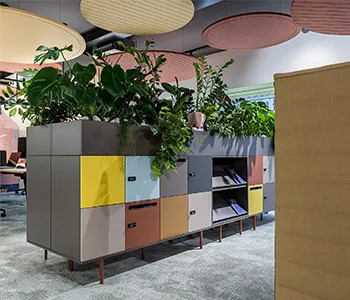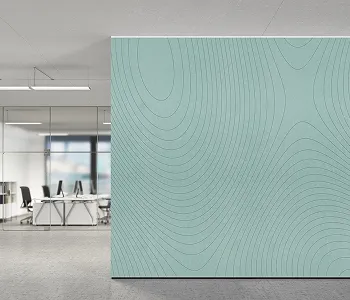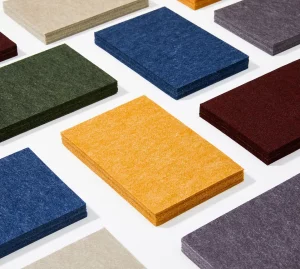تجنب تأخير الرد على استفسارك، يُرجى إدخال واتساب/سكايب الخاص بك مع الرسالة، حتى نتمكن من الاتصال بك في المرة الأولى.
سنرد عليك في غضون 24 ساعة. إذا كانت الحالة عاجلة، يرجى إضافة واتساب/وي تشات:
تحذير: متغير غير محدد $public في /www/www/wwwroot/bnpanel.com/wp-content/themes/hyhadmin/header.php على الخط 243
تحذير: محاولة الوصول إلى إزاحة مصفوفة على لا شيء في /www/www/wwwroot/bnpanel.com/wp-content/themes/hyhadmin/header.php على الخط 243
,. أو اتصل بـ
تحذير: متغير غير محدد $public في /www/www/wwwroot/bnpanel.com/wp-content/themes/hyhadmin/header.php على الخط 243
تحذير: محاولة الوصول إلى إزاحة مصفوفة على لا شيء في /www/www/wwwroot/bnpanel.com/wp-content/themes/hyhadmin/header.php على الخط 243
مباشرةً.
Noisy office? Voices ring and meetings feel tiring. That echo makes focus hard. The fix is simple: plan acoustic panel placement that calms the space fast.
Put acoustic panels at first reflection points on side walls, then add panels on walls behind listeners and speakers, and treat the ceiling with clouds or tiles. Start with 25–35% surface coverage, spread panels evenly, and adjust until you reduce echo to a comfortable level.

Where to place acoustic panels in an office
We are a professional manufacturer in China specializing in high-quality PET and wood acoustic panels. We build OEM/ODM solutions for distributors, designers, and contractors worldwide. Below is a practical field guide—clear rules, simple math, and options you can take to site tomorrow.
“Treat first reflections on walls and ceilings. Then add ceiling coverage in open areas. That’s the effective way to calm speech and make calls easier.”
If you’re unsure where to start, begin with coverage. A common rule for offices and meeting rooms is:
Why this works: when sound waves hit soft surfaces, they absorb sound instead of bouncing. Less sound reflection means fewer late energy tails, so people hear words—not echo.
Quick table: coverage vs comfort
| Space type | Size of the room | Target coverage | Feel in use |
|---|---|---|---|
| Phone room | ≤ 4 m² | 25–30% | Very dry, clear |
| 6–8p meeting | 10–20 m² | 35–45% | Natural, low echo |
| Boardroom | 25–40 m² | 40–50% | Controlled, confident speech |
| Open office | 60+ m² | 45–60% | Calm background, easier calls |
To compare products for offices, see these office acoustic wall panels (great for fast retrofits with PET felt).
Start with the placement of acoustic panels at the first reflection points in the room. Sit where people will talk or listen. Have a friend slide a mirror on the side wall. Wherever you can see the speaker through the mirror, place a panel there. That’s where sound waves reflect strongest.
If you want to place decorative options without losing performance, browse polyester fiber acoustic panels—they blend easily with brand colors while providing reliable sound absorption.
Yes. In many personal offices, panels behind your desk tame slapback from the rear wall. Add two more at the side reflection points. This trio dramatically improves speech clarity and mic pickup for calls.
For flexible shapes that double as brand elements, see acoustic wall panel art options in PET felt.
If furniture or glass limits wall space, the ceiling is your best friend. Use ceiling clouds or ceiling tiles to catch vertical reflections and rain down quiet.
Wood accents more your style? Consider wood slat acoustic panels for the ceiling—they add warmth while giving targeted diffusion and sound dampening.
Working from home? A home office is often reflective: hard desk, bare walls, low ceiling. Start with two acoustic panels on the side walls at ear height, one behind your monitor, and two small clouds on the ceiling above the desk.
Need a compact kit? Our acoustic panels for conference rooms page includes small-room bundles that fit a home office scale with easy install tips.
In large office space, put absorption where people talk: collaboration islands, copy areas, and hot-desk clusters. Floating clouds over benches and panels around meeting points calm chatter in a busy office without changing partitions.
If you need durable finishes for high-traffic office environment zones, check decorative PET acoustic panels—they’re easy to wipe and spec.

acoustic wall panels in open-plan office space
Meeting rooms store sound in the room if untreated. Hard tables and glass screens make speech tiring. Use acoustic panels at first reflections and a ceiling array above the table to reduce echo. Panels near the display reflect sound less, keeping the mic clean.
Why this helps
Try PET felt wall sets shaped for tech rooms—panels are among the fastest upgrades. For quick wall coverage, see PET polyester acoustic panels in office-friendly colors.
There are many choices. Pick the type of acoustic panel based on where you’re treating:
Remember: acoustic panels don’t “block” external noise. For soundproof isolation, you need mass, airtight seals, and decoupling. Panels absorb sound inside the room to lower reverberation and improve the sound you hear on calls—two different goals, both important acoustic solutions.
Curate textures and finishes that match the brand: wood veneer PET panel options keep interiors warm and modern while performing.
A quick way to size the number of panels:
Example: A 4×5×3 m meeting room has ~34 m² of treatable area. 34 × 0.35 ≈ 12 m² of absorption. If your panel is 1.2×0.6 m (0.72 m²), you’ll place the panels ~17 pieces, split between walls and ceiling.
Spread panels evenly, but prioritize first reflections first. It’s best to place a starter layout and then fine-tune.
Back-of-napkin chart (coverage vs estimated RT60)
Coverage 20% | ███████ ~0.8–1.0 s
Coverage 35% | ████████████ ~0.5–0.7 s
Coverage 50% | ████████████████ ~0.3–0.5 s
(Estimated using Sabine-style thinking; see references below.)

Panel placement math
Follow these simple steps for installing panels in drywall or concrete:
If you prefer hooks or Z-clips, our teams provide hardware guides for acoustic panels. Only once in your doc should you read “install acoustic panels”—because it’s that straightforward: measure, mark, mount. While installing acoustic sets, keep heights consistent and check doors and sprinklers.
Need help with finishes or fire classes? Browse our acoustic panels for your home and office ranges for spec sheets.
A fintech client had a glassy boardroom—classic reverb box. We added wall ribbons at first reflections and a 40% ceiling cloud grid. Result: speech transmission index rose by ~15%, and transcripts had fewer errors.
Designers loved how the same PET palette carried from rooms to open areas using acoustic panels that match brand colors. For similar finishes, see acoustic wood slat wall panels.
A home studio و acoustic panels in a home use the same physics, but goals differ. Studios often need deeper bass control and more diffusion. Offices focus on speech, so thin PET felt and ceiling clouds are enough.
Explore felt shapes that double as décor; acoustic panels on walls can be playful hexagons, strips, or art prints.
Use these “place and check” rules in any room:
If you’d like a ready palette, consider sound absorbing panels with clean PET texture; they integrate with lighting and signage easily.
To help you research, here are some learning pages with specs and examples:
(All pages above come from our product knowledge base and are intended as practical references for planners and buyers.)
Do I need soundproof walls or just panels?
Different jobs. Panels tame reflections inside; isolation needs heavy construction. Start with panels to make voices clear; isolate only if outside noise leaks in.
Where should acoustic panels go first?
Treat first reflection points in the room (side walls and front wall), then the ceiling over the table. After that, add back wall absorption behind listeners.
How high should I mount panels?
Ear height while seated for meeting rooms; mix a second band higher in tall spaces. Keep a consistent line and avoid sprinklers.
Can I place panels on walls made of glass?
Yes—use adhesive-backed PET or rail systems. If glass must stay clear, treat the opposite wall and the ceiling.
What about acoustic foam vs PET felt?
Foam is common in music rooms, but PET felt panels are tougher, cleaner to cut, and meet broader building standards for offices.
How do I pick the right acoustic panels?
Match thickness and finish to the task: thin PET for speech rooms, slatted wood where you want a lively feel, and clouds on the ceiling for large areas.
Notes on language and clarity: This guide keeps sentences short and direct so planners, buyers, and site crews can act quickly.